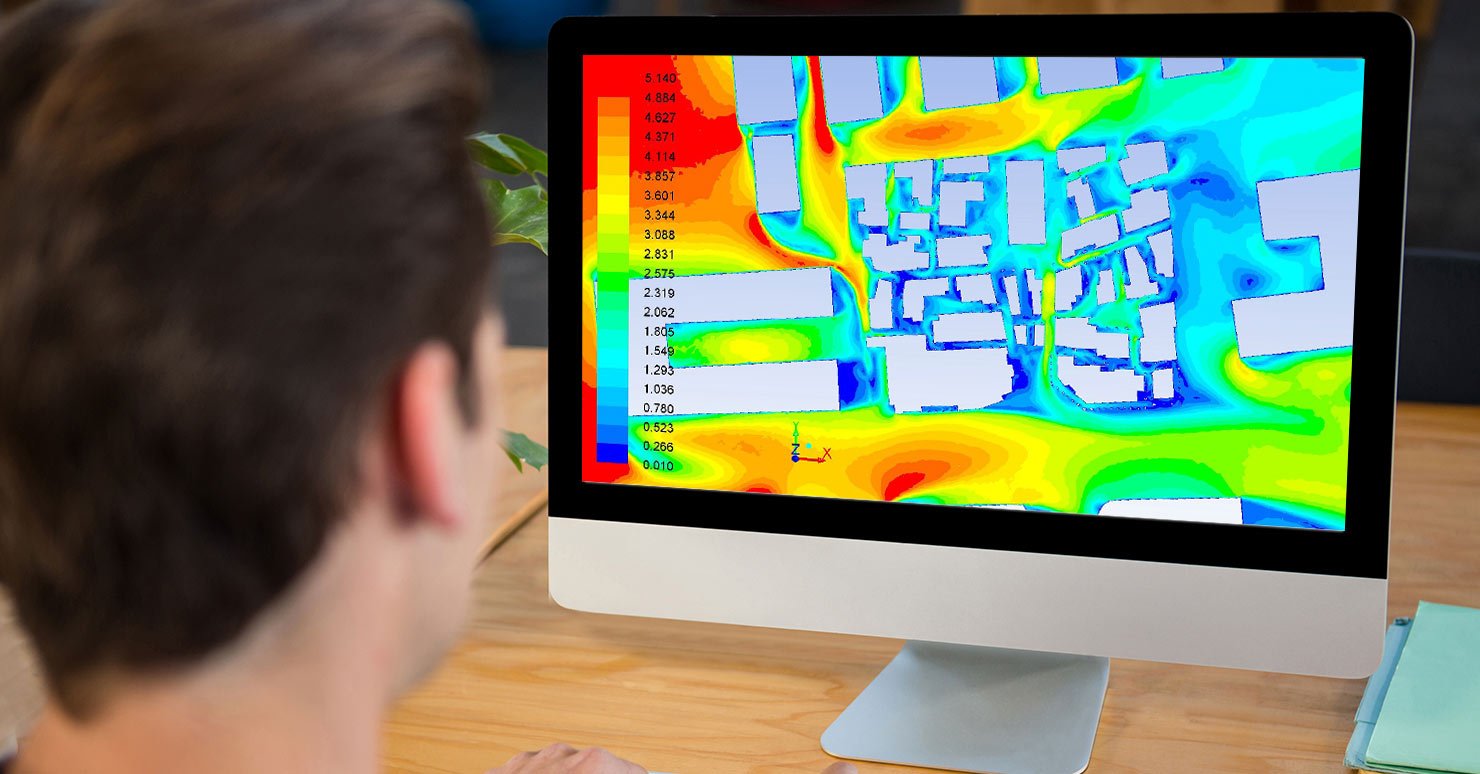In an outdoor urban setting, the thermal conditions can be more challenging to predict, thanks to varying weather that cannot be controlled, continuous movement by vehicles, pedestrians, and other elements like trees, fountains, buildings, and their positions, etc. Optimal thermal conditions in an outdoor urban environment help dwellers have better livable conditions and enhance the overall well-being and health of the inhabitants.
You must consider several factors to achieve outdoor thermal comfort, starting with an individual’s perception of thermal comfort to the environmental setting. These factors influence the urban island heat effect. Therefore, outdoor thermal comfort analysis is a tool that can immensely help to achieve the desired environmental conditioning. Learn more about it here.
What is Urban Island Heat Effect?
Urban Island Heat Effect is a phenomenon where the local temperature distribution is dynamic with the city’s development. Therefore, it may be affected by various factors such as the following:
Meteorological Factors: Air temperature, relative humidity, wind direction and velocity, solar radiation, etc.
Demographic Factors: age, gender, economic status, culture, etc.
Others: climate, season, geographical location, etc.
Outdoor Thermal Comfort Analysis
Thermal comfort, as defined by ASHRAE, is a mental perception of people towards various thermal conditions and is influenced by environmental and physiological dynamics.
Thermal discomfort due to rising urban island heat can cause several health issues like fatigue, dizziness, rapid breaths, and heartbeats, and other diseases that can be life-threatening as well.
Outdoor thermal comfort analysis can be done to assess the conditions of an urban setting and determine its thermal dynamics with the changes in the infrastructure of the urban island.
The most accurate and predominantly used indicator of outdoor thermal comfort is Physiologically Equivalent Temperature (PET) and Universal Thermal Climate Index (UTCI).
Using these methods and other techniques like CFD Analysis, engineers and designers can plan sustainable cities, improve urban geometries and the overall health of the city’s inhabitants.
Techniques Used to Achieve Outdoor Thermal Comfort

There are parameters and methods used to detect outdoor thermal comfort. When coupled with expertise, engineers can yield excellent results and insights to help plan sustainable cities with good design planning and architecture.
Architects and engineers can plan trees, design canopies and street elements based on these findings, and enhance the layout of urban islands.
Universal Thermal Climate Index (UTCI)
UTCI is an accredited way to determine the human thermal index to map human bioclimatic maps. It can assess outdoor thermal comfort by estimating air temperature, humidity, speed, direction, and radiation and provide an overall idea of the comfort levels of the inhabitants.
The EPW Weather and shading analysis are considered to estimate the UTCI Temperatures. In addition, it uses long-time climate statistics to gauge the UTCI Levels according to the specific site.
Shading Analysis
Areas that are protected or hidden from direct solar radiation are projected using shading analysis. The percentage of radiation that falls on the street is dependent on the size, shape, and angle of buildings and other elements of the urban island.
By performing shading analysis, engineers can design and architecture the streets in the urban island to achieve thermal comfort. This can include adding canopies, trees and also planning the building’s structure and other shading methods used to optimize the outdoor thermal comfort temperature levels.
Wind Analysis

Wind analysis is performed using CFD Analysis to predict velocity and direction of the wind in the urban island and other factors about airflow that affects the overall temperature quotient of the setting.
This also includes air conditioning units and vents placed in the buildings and their effect on the thermal comfort levels of the urban island. Finally, engineers and architects will analyze the street orientation by estimating natural wind velocity, direction, speed, and artificial wind and airflow.
CFD Analysis can be done using several parameters by creating 3D models, visualizing the airflow and temperatures during the design stage, and determining the cooling solutions based on the simulations and results.
Benefits of Outdoor Thermal Comfort Analysis using CFD Analysis
-
The UTCI Analysis and shading analysis can help us understand if the shading effect is sufficient for the urban island and acquire optimal outdoor thermal comfort levels.
-
Additional cooling or heating elements can be incorporated to match the required levels and enhance the living conditions of the inhabitants.
-
The percentage of shading can be estimated, and elements like canopies, trees, artificial shades can be placed for cooling effect.
-
Depending on the feasibility, active cooling solutions can be created and placed in the urban island, like mist cooling and radiation cooling systems.
-
Engineers and designers can also estimate if a mechanical active cooling system is feasible or not in the assessed urban island.
-
Mechanical active cooling solutions are expensive and maybe incompetent in large settings due to ample airflow requiring higher installation and maintenance costs.
-
CFD Analysis can also be done to evaluate the performance of the cooling solutions in place and make changes or optimizations.
Summing Up
Outdoor thermal comfort for an urban island is very vital to ensure the inhabitants, pedestrians, commuters, and other people involved in recreational and leisure activities have a pleasant experience at the location.
Ensuring optimal temperature conditions in the urban island can enhance the overall aspect of the city and create a sustainable environment not just for present needs.
Furthermore, good CFD Analysis with expert assistance and consultations can help engineers and design teams predict future conditions of the urban island using calculative and accurate measures and data.
This can also help builders save costs for indoor thermal comfort settings by assessing the cooling conditions of the outdoor environment and utilizing them in place of artificial cooling systems.
Mechartes offer world-class CFD and FEA simulation and analysis consultancy. With a professional approach and an engineering attitude, we focus on producing realistic simulation results. We’ve been able to offer outcomes that delight our clients, thanks to our innovative methodology, simulation algorithms, processing capacity, and over 16 years of experience. Contact us today.


 Share
Share  facebook
facebook